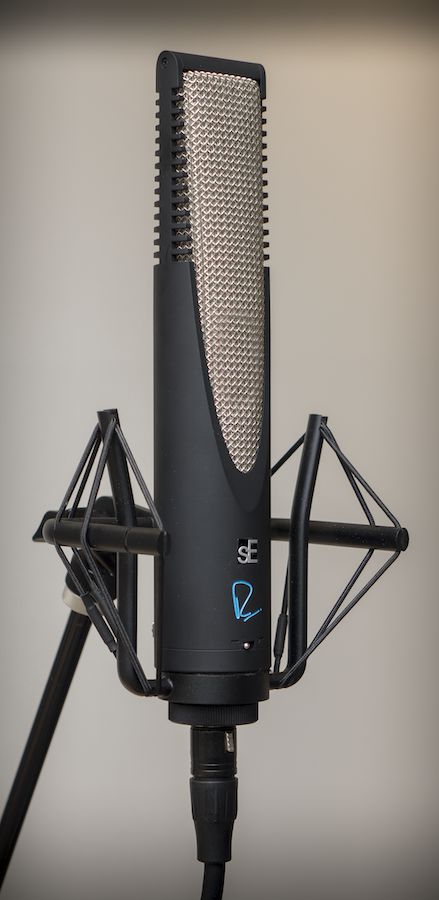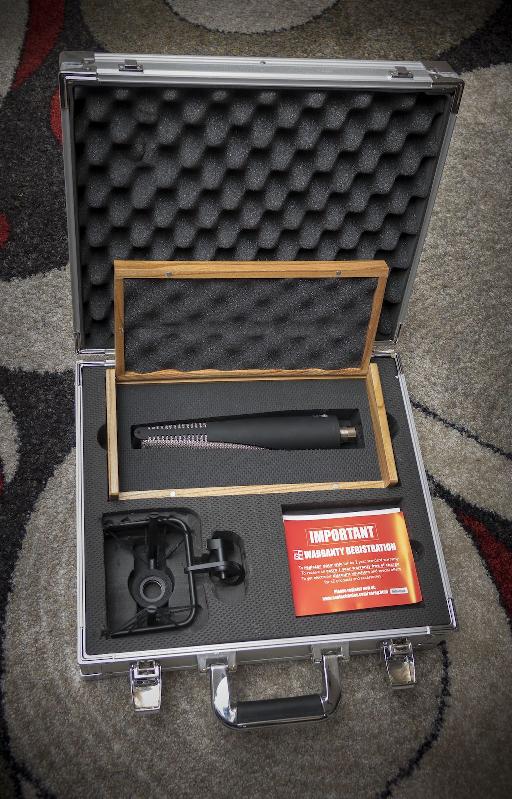Casa, Mucche alla riscossa
Nastro microphonesfor tutta la loro giftshave avevano sempre una lacuna: gamma di frequenza. Certo, anche se non è un difetto in realtà dipende l'ascoltatore, per produrre una risposta sonora veramente naturale è ciò che i microfoni a nastro hanno sempre fatto meglio. Per molte registrazioni, basta non hanno bisogno di raggiungere fino a 20 kHz. Ad esempio, la sE Voodoo VR1 e Audio-Technica AT4080 entrambi hanno 20 Hz18 kHz risposta ad alta frequenza e sono entrambi microfoni suono eccezionali. Ma mentre entrambi suonano meravigliosamente naturale, che diminuisce alta endespecially per le persone che hanno tradizionalmente registrati con condensatore microphonescan essere un po 'sorprendente.
Inserisci Rupert Neve: Una leggenda nel settore audio il cui nome è sinonimo di suono di alta qualità. Mr. Neve collaborato con SE per creare un microfono a nastro che potrebbe raggiungere fino a 20 kHz e oltre. Combinando Neves elettronica personalizzati con sE 2,5 micron nastro, l'associazione di queste due società ha prodotto la RNR1: il primo microfono a nastro con 20 gamma di frequenza Hz25 kHz. Ma ad alta fedeltà da solo non un grande suono trasduttore marca, così lascia esplorare più a fondo questo microfono unico.
First Glance
Le navi RNR1 in due casi: un caso di volo e un caso microfono di legno duro (quest'ultimo si inserisce nella ex), e viene fornito con una scossa esotico dall'aspetto mount. Le viti mic sul monte, così theres nessun angolo di montaggio del RNR1 sopraelevazione obbliga. Il microfono è di per sé un design raffinato con bordi netti e cosmetici audaci incoraggiati con le firme degli uomini che progettarono. (Siwei Zou di sE Electronics e Rupert Neve.) E 'sorta di assomiglia ad un boccaglio clarinetto di grandi dimensioni, ogni lato schermato da una rete metallica a tenuta che protegge l'elemento figura-di-8.

La SE RNR1 shock incluso montaggio.
Rimanere attivi
Come suona
Si noti l'aumento della risposta in frequenza tra 5 kHz e 20 kHz. Perché il RNR1 è in grado di catturare quelle frequenze superiori, youll sicuramente piacevolmente sorpresi di come lucido tue fonti suonerà. Ma se siete alla ricerca di un suono più tradizionale nastro, la curva morbida della risposta può essere facilmente addomesticato con un parametrico taglio di 5 dB a 13 kHz. Tuttavia, mi è piaciuto molto il matrimonio di nastro di calore e definizione condensatore-like. C'è anche un interruttore di taglio basso che inizia a lavorare a circa 400 Hz e tira fuori a -20 dB a 20 Hz.
Ho registrato diverse fonti attraverso la RNR1 comprese voci maschili e femminili, un cabinet ampli chitarra elettrica, e una chitarra acustica. Ho anche registrato le tracce con un nastro AT4080 microfono Audio-Technica e un microfono a condensatore AT4050 per il confronto. Il RNR1 ha positivamente ha la fascia bassa calore youd aspettarsi da un nastro, ma l'AT4080 ha fatto sembrare un po 'più ricco. Questo è in parte a causa della risposta del nastro ancora piacevole tipica del 4080, ma è stato anche perché il 4080 è eccezionalmente ricca di basse frequenze inferiori a 100 Hz. Rispetto al AT4050, che è un eccellente microfono a condensatore a sé stante, la fascia bassa del RNR1 era certamente più neutrale e naturale.
Ma, come youd aspettarsi, la risposta ad alta media e alta frequenza è dove il RNR1 brilla davvero. L'AT4080 semplicemente doesnt hanno la chiarezza del RNR1, e l'AT4050 proprio suono non ha ancora come naturale. Non fraintendetemi; Im mai venduto nessuno dei miei 4080s o 4050s, perché sono ancora due dei miei microfoni preferiti. Ma il RNR1 è uno di quei rari microfoni che semplicemente suono magico, indipendentemente dalla fonte.
E 'giusto per voi?
Tutto ciò che la magia non hanno un prezzo. I costi di RNR1 il doppio di quanto l'AT4080, e quasi tre volte più della AT4050 o sE Voodoo VR1. E se youre come me, si compra sempre i microfoni a coppie. Dal momento che un paio di RNR1s costerebbe quasi $ 4,000.00, potrebbe essere l'unico microfono si possiede senza doppia abbinato per stereo o multicanale registrazioni.
Conclusioni
Raramente mi eccito sui nuovi microfoni. Quello è soprattutto perché possiedo 66 microfoni in 27 varietà, ma anche perché ci hasnt stato un sacco di eccitante innovazione microfono di ritardo. Così, quando un microfono come il RNR1 arriva, il mio cuore salta un battito, perché rappresenta davvero ingegnosità tecnologica con un design classico ad alte prestazioni elettroniche. Per questi motivi, mentre il RNR1 può costare un sacco per l'acquisto, ma rappresenta anche un enorme valore che si ripagherà nel tempo. Se avete bisogno di un microfono che suona fantastico su praticamente qualsiasi sorgente, la sE Electronics RNR1 sarà sicuramente misura la fattura. Devi solo essere una di quelle persone la cui filosofia e / o requisiti professionali chiedere che valore trionfi un compromesso a basso costo.
Pros: Immaculate sound quality and character. Ribbon neutrality with high-end clarity. Striking design aesthetic. Shock mount and mic cases included. Cons: Significant initial investment. Please don’t squeeze the screens. You’ll surely want more than one RNR1. Street Price: $1,999.00 NOTE: Vintage King is running a special bundle this month w/ the new SPACE filter + the sE / Rupert Neve RNR1 ribbon: http://vintageking.com/se-electronics-rnr1-and-space-reflexion-filter |





 © 2024 Ask.Audio
A NonLinear Educating Company
© 2024 Ask.Audio
A NonLinear Educating Company
Discussion
Want to join the discussion?
Create an account or login to get started!